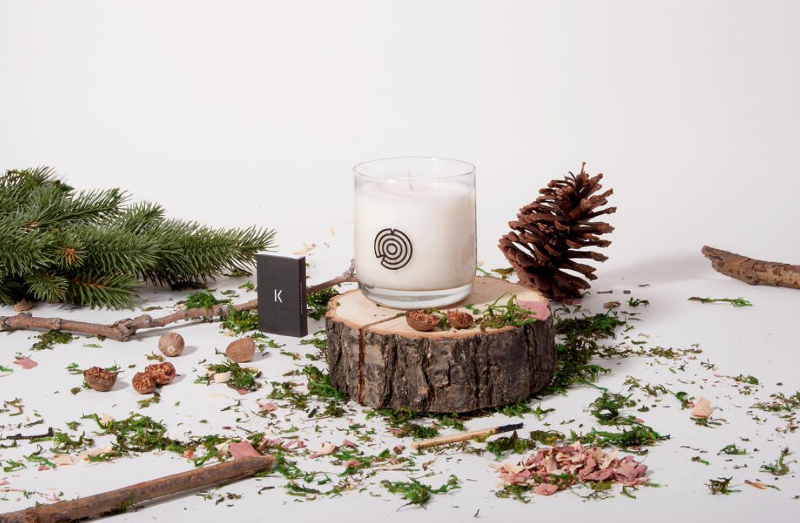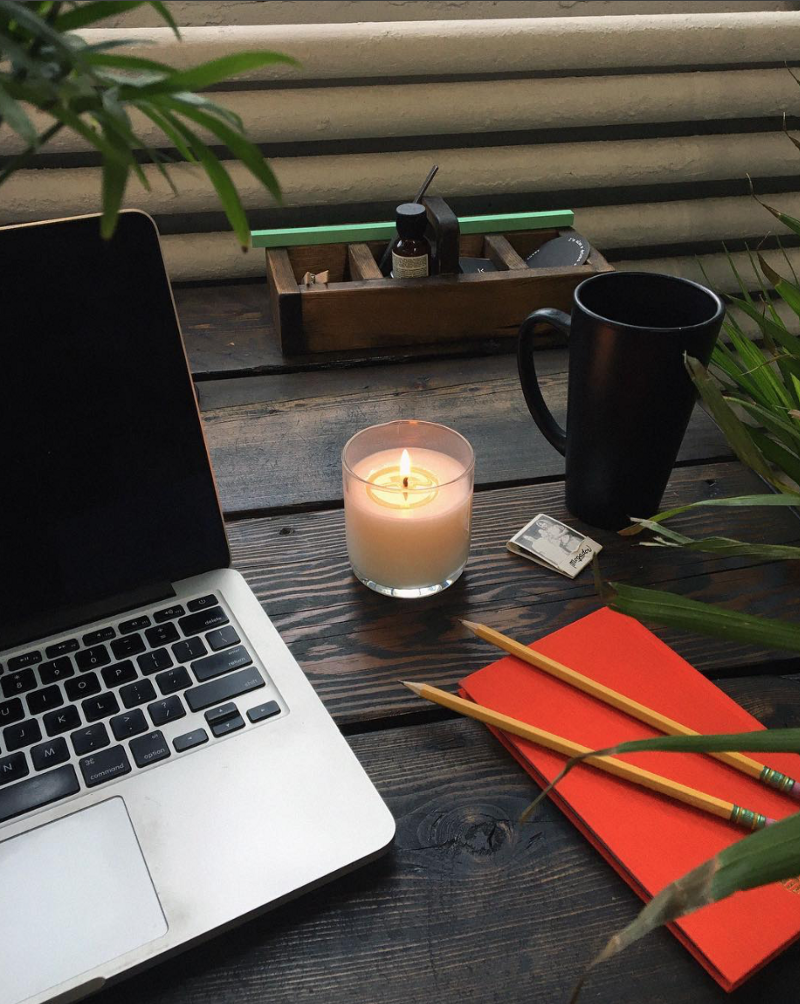
In our bodies, everything is connected. Our sense of touch changes our mood. Our sight influences flavor. Smells transport us to a fond memory. Tastes dictate what we put in our bodies, and how we feel.
Today we speak with Steve Tracy, co-founder of sustainable, non-toxic candle company, Keap Candles. Steve teaches us how to incorporate our sense of smell into self-care rituals.
Splendid Spoon: Hi Steve! Tell us about your journey to launching Keap.
Steve Tracy: Harry (my co-founder) and I were roommates on Keap street in Brooklyn. We loved scented candles, and always lit one when we got home in the evening. The more we used, the more interested we got in what was actually in them. It was surprisingly hard to find out!
Making candles started as a pet project — we took perfumery courses, made candles in our kitchen, toured candle manufacturers…The more research we did, the more we came to understand that very little care went into most products. We decided we could do better, so we started Keap!
SS: How do you pick the scents for the candles?
ST: Our scents are based on strong sensory ideas that trigger nature-inspired memories. They are carefully and delicately created, but we give them simple names — like “Wood Cabin” — to invite people to let their imagination run free.
To create the scents, we work with a master perfumer (one of only ~200 in the world). It’s a highly collaborative and creative process. We smell things and discuss the scent to reach a shared understanding of what we want. He then composes a melody from the thousands of scented elements (or “notes”). That’s adjusted dozens of times until we reach a final scent composition. It’s a lot of smelling, and a lot of fun!
SS: What scents do we find most comforting?
ST: The emotional responses we have to scents are tied to personal experiences — what may be delightful to one person could be offensive to another. It varies depending on earlier exposure to smells and the emotional context of when we smelled them.
People tend to find certain scents like lavender or chamomile soothing. Studies show that the calming response to these scents is real and measurable. However, this response is reinforced by the fact that these scents are used in “calming” products e.g. massage oils, pillows, teas, and baby products.
SS: How do you make candles with non-toxic, sustainable ingredients?
ST: We found that there’s very little scrutiny on what goes into candles: they don’t require any labelling other than the safety warnings about fire risk. A $70 candle could contain the same harmful waxes (like paraffin), as a $10 one, and you wouldn’t know.
We’re changing that by being transparent about what’s in our products, from the wax to the fragrances. We’re doing our best to use as few materials as possible, and pick the most sustainable ones.
For now, that means using coconut wax, which is the “least bad” that’s available. However, “least bad” isn’t good enough. Over the past 18 months we’ve been developing our own all-natural formulation that is organic, fairtrade, and rainforest alliance certified (where applicable).
It’s disappointing that despite the huge demand for these products, these standards and products don’t exist. Finding the best solution is hard: it will probably take another year of research and testing before we’re ready to start producing with it.

SS: How can candles help us chill out and tune into ourselves?
ST: We live in a world where there’s so much competing for our attention, but a candle won’t light itself by accident.
When you buy a candle and choose to light it, you intentionally create a special moment. It’s a simple act that naturally leads to a sense of peace and calm.
SS: Can you share your go-to self-care routine?
ST: Mine is morning-focused: if I start the day right, the rest of it follows suit! I wake up, drink as much water as I can, and add a little coconut oil: having some fats first thing helps unfog my brain more than coffee does [Research shows that your brain, which is nearly 60% fat, needs fats to function. — Ed.]. I then make my lunch, which is typically roasted veggies and greens with a simple lemon-olive oil dressing.
Recently I’ve also started to take a moment to think about everything I’m grateful for. It puts me in a positive mindset. I’ve been surprised at how big a difference this has made!
SS: Has your sense of smell improved since you first started Keap?
ST: Absolutely. Harry and I are both more aware of smells than ever before. It’s amazing what has scents — from all the obvious things through to magazines, stones, and even different air temperatures. If you pay attention, everything has a subtle sensory trail that your nose can pick up.
Since I work with scent it’s important to have real-world reference points to use, as I don’t have an innate scent vocabulary. Descriptions are incredibly important and helpful. If I describe something as “the way an apple’s skin smells after you rub it”, our perfumer understands the idea, and can help integrate it into a fragrance.
SS: When do you feel most at peace?
ST: When I’m surrounded by upward of 10 candles.
